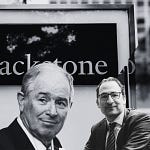Defining the Housing Landscape (00:00:00 - 00:04:46)
The discussion opens with an introduction to Moses’ newsletter, Random Walk, which explores macro themes across asset classes, often linking to capital flows in housing and beyond, setting the stage for a nuanced take on affordability issues.
Rejecting the “crisis” or “shortage” labels, the focus shifts to regulatory frictions in dense areas that add unnecessary drag, potentially elevating prices slightly, though this is deemed a lower-priority factor amid broader economic forces.
Preferences for single-family suburban homes clash with upzoning pushes, which risk making suburbs denser—counter to why people leave cities—while mortgage subsidies via 30-year fixed rates create inequities, favoring those locked in low rates.
“If you really wanted to unglue the housing market, you just would do away with the 30-year mortgage,” highlighting how this structure insulates residential from rate shocks, unlike commercial real estate’s markdowns.
The real gap isn’t in sheer units but in desirable locales, prompting ideas like replicating appealing suburbs rather than cramming more into existing ones.
Financing Models and Regional Shifts (00:04:47 - 00:10:20)
Texas’ Municipal Utility Districts stand out as a successful model, allowing new communities to finance infrastructure through bonds backed by higher property taxes over 30-40 years, effectively lowering entry barriers by capitalizing costs into home prices.
In contrast, California’s Prop 13 fosters lock-in effects, where owners cling to properties to avoid tax reassessments, compounding inventory shortages alongside rate disparities.
Superstar metros evolve cyclically, with Sunbelt gains in Florida, Texas, and North Carolina pulling younger families and jobs in tech/finance, while Northeast hubs like New York see aging populations drive low-wage healthcare growth.
New York’s job recovery lags, with finance roles taking five years to exceed pre-pandemic levels, fueling a narrative of “old centers of attention” losing gravitational pull to vibrant, family-oriented regions.
Supply responds nimbly to demand, as builders flock to permissive areas like Texas, where space and regulations align with migration, underscoring that “supply and demand in housing is pretty agile.”
Elasticities and Income Dynamics (00:10:21 - 00:13:32)
Challenging Glaeser et al.’s long-standing research on regulatory taxes (25-40% in some areas), a San Francisco Fed paper reveals uniform supply elasticities across metros, emphasizing income and inflows as primary price drivers over land-use rules.
Neighborhood variations exist, but metro-wide, demand shocks are met through concentrated development in less restricted zones, debunking rigid constraint myths.
Households consistently devote ~30% of income to housing, with rate hikes diverting more to interest and squeezing principal, mechanically depressing values—evident in commercial but delayed in residential.
Builders adapt by compressing margins to 2008 lows, offering smaller, cheaper homes and incentives, showing market responsiveness amid sticky existing-home prices where owners avoid sales to dodge losses.
Job Patterns and Demographic Pulls (00:13:33 - 00:20:00)
Northeast employment leans on healthcare and senior care for an aging demographic, with retail and quick-serve following to cater to lower-income needs, while Sunbelt spots like Austin attract young professionals starting families.
“Miami loses people but gets more expensive because it gets more exclusive,” capturing how wealth concentration trumps raw population in pricing, differing from broader outflows in places like New York.
Growth in finance and tech remains moderate in legacy cities, contrasting explosive expansions in Dallas and Austin, where organic drivers like child-rearing amplify housing demand.
Overall, builders chase demand flows, building where people go, with Texas’ ease facilitating this—though capital intensity tempers speed, the system proves “about as responsive as a capital-intensive product like real estate is going to be.”
Accidental landlordism emerges as sales stall, with owners opting to renovate or rent rather than accept lower bids in a high-rate environment.
Market Stickiness and Builder Strategies (00:20:01 - 00:30:00)
Existing-home volumes plummet due to price stickiness, not evaporated demand; owners treat homes as assets, holding out to avoid crystallizing losses, erasing the traditional new-home premium.
Builders pivot aggressively, shrinking footprints and footprints for affordability, with Pulte and others hitting razor-thin margins, reflecting adaptive tactics in a rate-sensitive market.
Regional divergences highlight exclusivity effects, where net wealth gains outpace population metrics in driving appreciation, as in Miami’s case.
Broader economic themes tie in, with aging Northeast relying on care sectors, while youthful Sunbelt booms from family formation and high-wage jobs.
“The way people sort of talk about the housing shortage is almost like, oh, you just have to build more supply and then magically demand shows up,” critiquing supply-side oversimplifications.
AI’s Role in Economic Cycles (00:30:01 - 00:45:00)
Transitioning to macro views, AI stands as the sole pro-cyclical force, though not labor-intensive, with healthcare’s growth constrained by affordability amid unsustainable subsidies.
Productivity from AI hinges on ROI matching market norms, fueling sustained CapEx as seen in Google’s 35% cloud surge, signaling real enterprise uptake beyond experimentation.
Jevons paradox applies: cheaper compute spurs more usage, far from saturation, with no speculative “black GPUs” akin to 2000s fiber overbuilds—demand melts hardware instead.
“AI is a job maker, not a job taker,” positing it births new industries, like energy enabling lighting sectors, though current evidence is nascent.
Middling growth persists, with low employment gains; upside risks include re-engaging sidelined workers, but policy-driven manufacturing revivals face skepticism.
Risks and Rational Markets (00:45:01 - 01:00:00)
Healthcare pass-throughs loom as subsidies wane, hitting employers first and potentially curbing hiring; energy shocks from AI-driven demand could spike electricity costs, dampening broader activity.
Gold’s ascent reflects BRICS reserve appreciation, not dollar deleveraging, with U.S. assets retaining “tallest midget” appeal amid global options.
Markets discern sharply: Meta’s CapEx hike compresses margins and prices, while Google’s growth justifies spends, countering bubble claims—”shareholders are pretty discerning.”
U.S. policies, even if disadvantaging allies, may amplify comparative edges, drawing more capital here rather than abroad.
“If we sort of if our policy hurts European economies, it’s not like money is just going to make our comparative advantage that much more.”
Forward Visions and Investments (01:00:01 - 01:19:05)
Recession evasion defies 2023-24 forecasts, with resilient spending and jobs suggesting no imminent doom, though population slowdowns threaten GDP baselines.
AI’s untapped potential evokes “faster horse” analogies; we’re in discovery mode, with tools like Cursor showing pricing power—users would pay 10x current rates.
Long on tech equities with caution, dip-buying during freakouts, as earnings growth underpins valuations despite froth concerns.
“We don’t yet know the things that we’re going to do with it,” underscoring AI’s invisible opportunities, potentially spawning unforeseen jobs and sectors.
Overall, rational markets prevail over gloom, with watches on healthcare/energy drags, but optimism for adaptive growth in a middling yet stable landscape.
Thank you!
… to
, , and many others for tuning in live! Download the Substack app to tune in to future Boyd livestreams:















